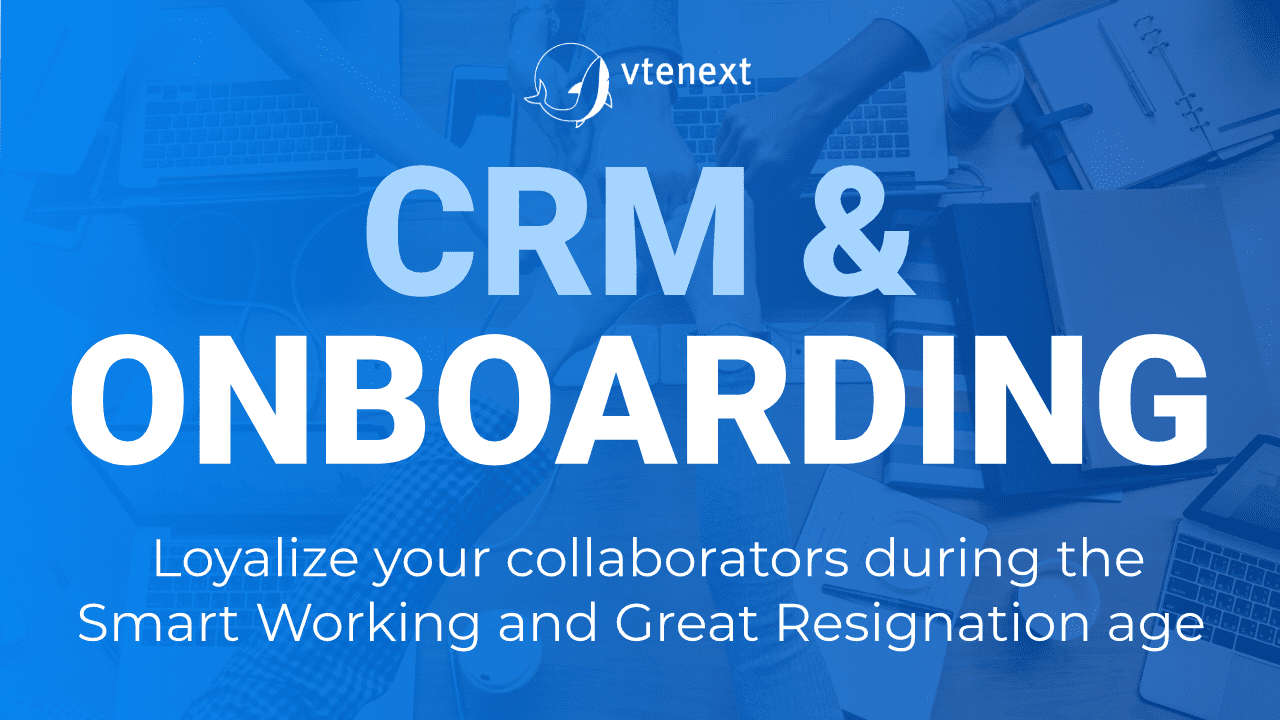The words Smart Working are now common in our everyday professional life and deeply changed the working environment and the way collaborators relate with companies.
We also witnessed another important phenomenon: the great resignation. Great resignation has led people to leave their job, especially during the first six months, more easily.
Creating an effective Onboarding process and offering to collaborators the possibility to work remotely has become very relevant. Also because during the last months in the USA started a new trend: the great regret.
Remote Working and Smart Working
During the last two years Remote Working and Smart Working have been used as synonyms but they refer to two different ways to work, as we talked about in our article Remote Working & Smart Working.
Remote Working is about working outside the company, but respecting office hours and defining a specific location from where the employee will work.
Smart Working, or agile working, allows the collaborator to work from any suitable place and with flexible hours. The law provides for some days of work in office and some days of agile working.
It is important to underline that Smart Working will remain in the 89% of big companies and in 62% of public administrations (Politecnico Di Milano Smart Working Observatory, 2021)
Smart Working, great resignation and great regret
Italian workers discovered a way to work which allows them not only to improve their work life balance but also to be more productive and efficient. They also thought about their priorities, professional and not, and about their career, discovering some aspects they forget about which are now fundamental: security, wellness, involvement and passions.
According to McKinsey “Employees want to find a goal in their job. They want social and interpersonal connections with their colleagues and managers. They want to feel a shared identity. They want significant interactions, not only transactions”.
From this point, we saw the increasing number of volunteer resignations justified by different reasons: career opportunities, time for themselves, possibility to Smart Work, desire to change, jobs more coherent with personal values.
Gartner published at the beginning of March a research in which he underlined that more than 70% of IT workers are trying to change their job inviting companies to use a more “human centric” model with better office hours, more productive reunions and more flexibility to decrease the turnover.
A very important phenomenon, especially within some industries, which companies cannot ignore.
What is happening during the last months in the USA goes in the opposite direction. People who left their workplace are not always finding a better situation.
Muse, the personal search platform, declared that 72% of the people they interviewed experienced “surprise or regret” because their new position or the new company in which they work are different from what they thought. 48% of these workers declared that they would try to get back their old job.
The “dream job” does not match with the reality: many companies are not as they advertised during the recruiting phase.
Smart Working and Onboarding for companies
How can companies, especially small ones, retain talents avoiding chaos and resource dispersion?
Most employers are not going to be able to fulfil all of these requests.
Attracting and retaining talents must include the definition of better strategies of talent attraction, an effective and stimulating Onboarding phase and efficient retention plans. “The high competition we are living made necessary new 360° strategies, with two main goals for each business: attract and retain resources.” (La Stampa, 2022)
For companies Smart Working is certainly a way to increase the trust between managers and collaborators and gives the possibility to hire talents remotely.
However, it is not enough.
Companies can no longer only make job offers and wait for candidates. They have to become attractive and pay extreme attention to what they promise.
The risk is creating high expectations, which cannot be satisfied starting the great regret process.
Onboarding is a crucial phase for every company, both big and small ones.
During the first weeks, the collaborator discovers the environment, he meets the new colleagues, he understands the company’s values and he understands if the promises he received during the recruiting phase are satisfied.
Important: Onboarding does not begin on the first day of work, but much earlier! It might start when, during the interview, you understand that the person is the one you want to hire. This process also covers the transaction period, which goes from the resignation to the first day of work in the new company.
At the same time, it does not end with the first day of work, with the delivery of the computer and the access to the accounts. In addition, it is neither a task to be flagged. It is a constant commitment, which shows attention to the person and his career path. So it is directed also to people who work in your company yet.
Why is Onboarding important? Which are its functions?
about company related themes (how asking days off, how the organization chart is structured, etc.)
integrating competence gap and knowledge
making the person feel part of the company with an involvement in the operative context
making the collaborator feel comfortable, part of a project and helping him to identify himself with the company he works for.
Some Onboarding tips
A good practice consists in doing a list of activities implemented for every Onboarding function, adding the missing ones. You have to ask yourself: what can we do to form, train, involve and integrate?
You have to start positioning these “little bricks”: some of them are going to be mandatory (computer, account, internal policy, etc.), some others are going to be addressed to the future and the projection.
In this way, each company will have a framework, which will allow, depending on the hired person, to choose the best “bricks” and to create tailor made Onboarding processes.
A sales manager cannot receive the same Onboarding path of an IT specialist.
Some other practical tips to welcome the new resources:
- welcome email
- meet the team: some moments with the other members of the team to improve integration and involvement, also through recorded videos
- internal communication through newsletter or podcast using the other employees’ voices
- moments during which the new resource can talk about himself
- training, mentoring and coaching as welcome kit
- asking for feedback: it is the only way to correctly understand the situation without having surprises.
Discover how vtenext can be useful for your Smart Working
Download the case study
During the years, we’ve helped many companies of every size and industry finding the solution that best fitted their needs, so do not hesitate to contact us!

